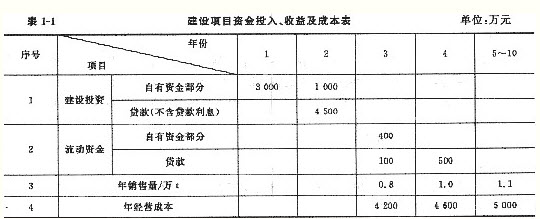问题
问答题
某建设项目有关资料如下:
(1)项目计算期10年,其中建设期2年。项目第3年投产,第5年开始达到100%设计生产能力。
(2)项目固定资产投资9000万元(不含建设期贷款利息和固定资产投资方向调节税),预计8500万元形成固定资产,500万元形成无形资产。固定资产年折旧费为673万元,固定资产余值在项目运营期末收回,固定资产投资方向调节税税率为0。
(3)无形资产在运营期8年中,均匀摊入成本。
(4)流动资金为1000万元,在项目计算期末收回。
(5)项目的设计生产能力为年产量1.1万吨,预计每吨销售价为6000元,年销售税金及附加按销售收入的5%计取,所得税税率为33%。
(6)项目的资金投入、收益及成本等基础数据,见表1-1。

(7)还款方式:在项目运营期间(从第3年至第10年)按等额本金法偿还,流动资金贷款每年付息。长期贷款利率为6.22%(按年付息),流动资金贷款利率为3%。
(8)经营成本的80%作为固定成本。
问题
编制借款还本付息表,并填入计算结果(表中数字按四舍五入取整,下同)。
答案
参考答案:
长期借款利息:

编制项目还本付息表,见表1-2。

